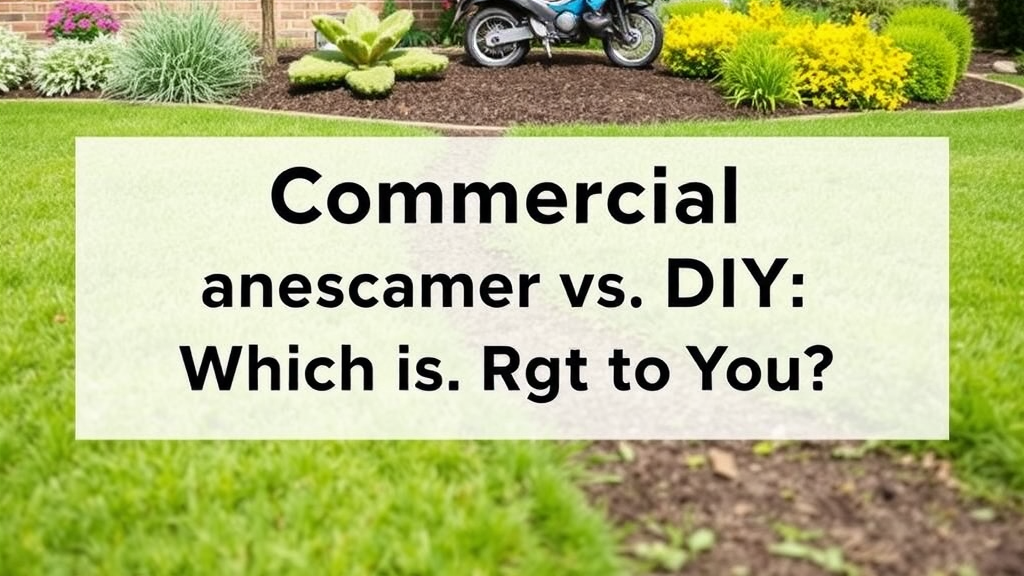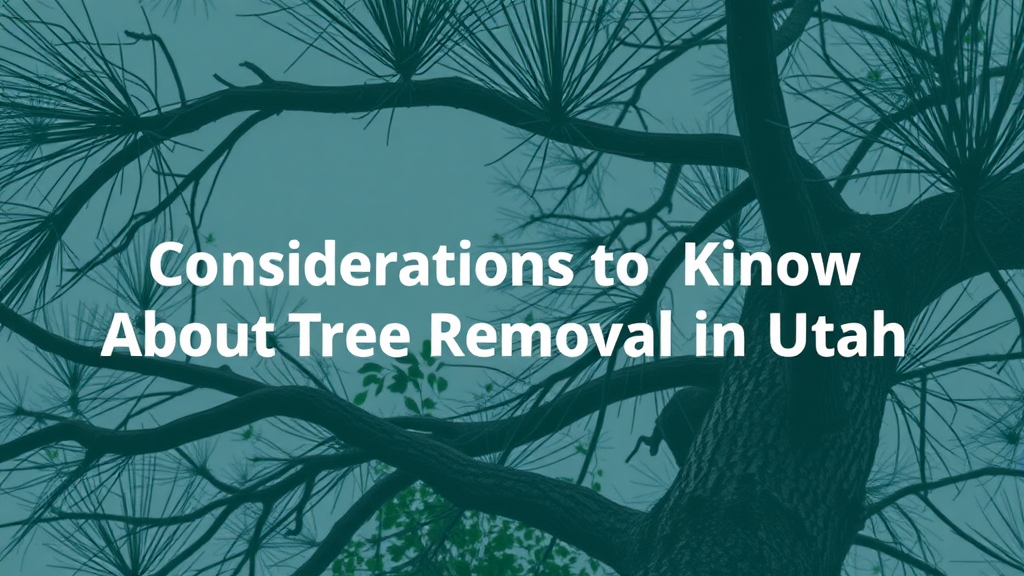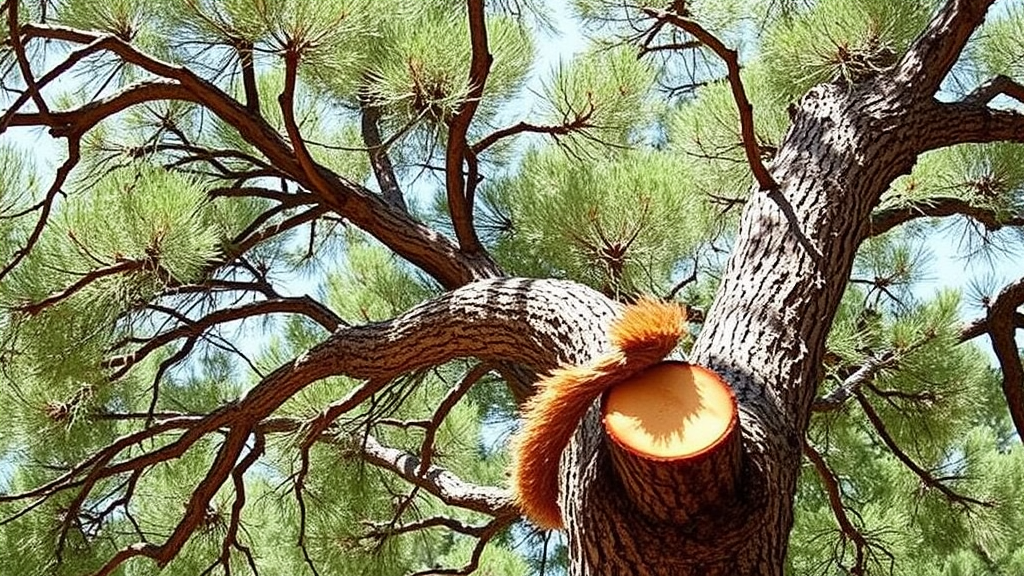Commercial Landscaper Vs DIY: Which Is Right For You? — Truco Services (801) 466–8044

Truco Services is a Commercial Landscaper in Utah.
4640 Commerce Drive Murray Utah 84107 (801) 466–8044
Find out more by clicking here, here and here.
Commercial Landscaper vs DIY: A Cost-Benefit Analysis
When it comes to establishing a vibrant landscape for your property, the decision to hire a commercial landscaper or opt for a DIY approach can significantly impact both the end result and your pocketbook. Each option offers its advantages and challenges, and understanding these facets can guide you in making an informed choice tailored to your specific needs. Let’s break it down.
Understanding the Costs
The first factor to consider in this decision is the cost involved. A commercial landscaper typically comes with a set price that includes labor, materials, and equipment. This price varies based on the complexity and extent of the project. Below are some common costs associated with hiring professionals:
- Design Fees: Initial consultations may involve design fees that can vary widely depending on the landscape’s scale.
- Labor Costs: Professionals have the experience, which might justify higher labor charges.
- Material Costs: Landscapers often have access to quality materials at bulk pricing, which can be an advantage.
- Maintenance Packages: Many commercial landscapers offer ongoing maintenance, providing value over time.
On the flip side, DIY landscaping may appear more affordable at first glance. However, the hidden costs can add up:
- Tool Purchases: Consider the expense of purchasing or renting tools if you don’t have them already. For example, hiring a stump grinder or aerator can be costly.
- Material Costs: Home improvement stores may offer limited selections and higher prices than suppliers available to landscape professionals.
- Time Investment: DIY projects can take a significant amount of time, often leading to increased personal expenditures in terms of labor.
Expertise vs. Time Investment
When evaluating whether to engage a commercial landscaper or to attempt it yourself, the level of expertise required for the job is paramount. Commercial landscapers bring a wealth of knowledge to the table:
- Design Skills: Professionals understand the principles of design, ensuring that elements like color, texture, and scale work harmoniously.
- Plant Knowledge: A good landscaper knows which plants thrive in your area’s climate and soil, enhancing the longevity of your investment.
- Efficient Execution: With training and experience, landscapers can complete projects swiftly without sacrificing quality.
In contrast, the DIY route offers flexibility and a personal touch, but it does require significant time and a willingness to learn:
- Learning Curve: You may need to research landscaping techniques and plant care, which could be time-consuming.
- Physical Labor: DIY landscaping usually entails a lot of hard work, from digging to planting and maintenance.
- Trial and Error: Mistakes in landscaping can lead to unexpected costs or unsatisfactory results.
Long-Term Value Proposition
Thinking ahead is crucial when deciding between a commercial landscaper and DIY landscaping. A well-executed professional job can increase your property value significantly. Well-designed landscapes often have a return on investment higher than many home improvements, benefiting homeowners in the long run.
On the other hand, if you’re considering DIY landscaping, ensure you approach it as a long-term project. Understanding that you may need to invest time and effort into maintenance will play a role in your return. Regular upkeep can be demanding, especially if you lead a busy life.
Final Thoughts on Making the Right Choice
Ultimately, your decision between hiring a commercial landscaper and going the DIY route hinges on several factors, including budget, expertise, and personal preference. If you prioritize quality and efficiency, a commercial landscaper might be the right choice for you. However, if you have the time, willingness to learn, and a vision for your landscape, embarking on a DIY journey can also be rewarding.
Whichever path you choose, remember that investing in your outdoor space can have lasting benefits, creating a more inviting atmosphere for family, friends, and clients. For personalized assistance, don’t hesitate to reach out to professionals like Truco Services at (801) 466–8044, who can guide you through your landscaping project with expertise and care.
The Environmental Impact of Professional vs DIY Landscaping
When considering landscaping options for your home or business, one significant factor to evaluate is the environmental impact. Whether you’re leaning towards hiring a professional landscaper or planning to tackle the project yourself, understanding these impacts is crucial. Each approach has its advantages and drawbacks that can affect local ecosystems, biodiversity, and water conservation.
Water Usage and Conservation
Water scarcity is a growing concern in many regions. Landscaping decisions can directly influence how much water is used. Professional landscapers often implement efficient irrigation systems and drought-resistant plants. They focus on:
- Smart irrigation technologies: These can significantly reduce water waste by scheduling watering when it’s most needed.
- Native plants: By using vegetation that thrives in your local climate, professionals can minimize the need for supplementary watering.
On the other hand, DIY landscaping may not always prioritize water efficiency. Enthusiastic homeowners may opt for exotic plants that require more water, leading to potential overuse. Therefore, selecting appropriate species and understanding your local water restrictions is essential.
Soil Health and Erosion Control
Healthy soil is pivotal for a balanced ecosystem. Professionals often utilize techniques that maintain soil integrity. They engage in practices such as:
- Soil testing: Evaluating nutrient levels helps determine the best amendments necessary for plant health.
- Mulching: Covering soil with organic material aids in moisture retention and prevents erosion.
Conversely, DIY landscaping can unintentionally harm soil health. For instance, improper use of heavy machinery might compact the soil, reducing its aeration and nutrient capacity. Homeowners may overlook essential practices that support soil ecosystems, leading to degradation.
Biodiversity Effects
Landscaping can shape local biodiversity, particularly through plant selections. Professionals generally promote biodiversity by:
- Planting a variety of species: Encouraging a mixture of plants attracts diverse wildlife and pollinators.
- Considering local ecosystems: Focusing on native plants ensures that the landscape supports local fauna.
In a DIY scenario, homeowners might not prioritize biodiversity. The tendency to plant only a few trendy species can lessen the local animal population as fewer pollinators and other beneficial insects visit the area. Understanding the importance of variety can make a significant difference.
Use of Chemicals and Sustainability
The choice of fertilizers and pesticides is another area where the impact varies between professional and DIY landscaping efforts. Licensed landscapers tend to:
- Employ eco-friendly solutions: They are often trained in sustainable practices and integrated pest management.
- Minimize chemical runoff: Professionals understand how to apply products effectively to reduce environmental harm.
On the flip side, DIY projects may lead to overuse of chemicals without proper guidance, risking pollution of local waterways. Homeowners might not realize the residue effects of their choices, amplifying potential harm to the environment.
Waste Management
Waste management practices differ greatly between professional services and DIY attempts. Landscaping professionals typically:
- Implement recycling programs: They often recycle organic waste, like clippings, through composting.
- Minimize landfill waste: By planning carefully, they reduce unnecessary disposal of materials.
Conversely, a DIY project may increase waste, especially if homeowners lack the knowledge to repurpose materials efficiently. Disposing of landscape debris in landfills contributes to environmental degradation.
While both professional and DIY landscaping have their merits, the environmental impact of each can lead to vastly different outcomes. If sustainability is a priority for you, understanding the implications of your choices is vital. Whether you choose to hire a professional landscaper or attempt the project yourself, being mindful of these environmental factors helps safeguard the planet for future generations.
Assessing Your Landscape Needs: Signs You Might Need a Commercial Landscaper
When it comes to maintaining your outdoor space, understanding your landscape needs is crucial. Whether you’re a property owner or a business manager, recognizing the signs that indicate the help of a commercial landscaper can save you time, effort, and money in the long run.
One of the first signs that you might need a professional landscaper is when you find yourself overwhelmed by the sheer size and complexity of your landscape. Maintaining a large plot of land can often exceed the typical homeowner’s skill set and available time. If you have multiple features such as gardens, trees, or sprawling lawns that require regular upkeep, hiring a commercial landscaper can make all the difference. They bring the expertise and resources needed to manage these areas effectively.
Another indicator is the condition of your landscaping. If your plants are wilting, your lawn is patchy, or weeds are taking over, it may be time to seek professional help. Experienced landscapers can assess the health of your greenery and implement effective solutions tailored to your specific needs. They have access to better tools and products that can rejuvenate and maintain your landscape in a way that is often unattainable on your own.
Time is another critical factor. If your schedule is packed with work or personal commitments, your outdoor space might begin to suffer. Regular maintenance requires consistent attention. A commercial landscaper can handle everything from lawn care to seasonal planting, freeing you up to focus on other responsibilities. This can ultimately enhance the overall appearance of your property, reflecting positively on your business or home.
Here are some specific signs you might need a commercial landscaper:
- High Maintenance Needs: If your landscape demands more than basic upkeep, it’s a clue that a professional can help.
- Long-term Projects: Complex installations or major landscape renovations often require skilled hands. If you’re contemplating significant changes, consider hiring experts.
- Inconsistent Aesthetic: If your outdoor space lacks a cohesive look or feels disorganized, a landscaper can provide design services that improve the overall appeal.
- Pest Problems: If you’re encountering issues with pests that are damaging your plants, pest control is another area where professionals can provide significant assistance.
- Seasonal Adjustments: Different seasons require different care techniques. A commercial landscaper can manage these transitions with ease.
Budget constraints can also play a significant role in deciding whether to hire a commercial landscaper. Initially, it may seem like an additional expense to hire landscaping services. However, when you factor in the cost of purchasing plants, tools, and equipment for DIY projects — alongside the potential for errors that can lead to additional expenses — a commercial landscaper might be more cost-effective over time. They often have established relationships with suppliers as well, which means potential savings on materials.
Additionally, if your outdoor area is utilized for business purposes, the importance of proper maintenance is heightened even further. A well-kept landscape can enhance your brand’s image, attract customers, and create a welcoming environment. On the other hand, poorly maintained landscaping can deter clients and convey the wrong message about your business.
Safety is another key factor to consider. Landscapers are trained to handle potential hazards associated with outdoor maintenance, such as using heavy machinery or dealing with chemicals. If your landscape involves any potential risks, hiring a professional can mitigate those dangers and ensure a safer environment.
Regular upkeep and an inviting landscape can speak volumes about your professionalism and ethos. If you recognize one or more of the signs above, consider evaluating your landscape needs carefully. A commercial landscaper can bring the skill, time, and expertise necessary to elevate your outdoor space, ultimately creating a healthier, more attractive environment.
When deciding between DIY solutions and hiring a professional, weigh the pros and cons based on your specific situation. By assessing your landscape needs thoroughly, you can make an informed choice that best suits your circumstances, and when in doubt, reach out to experts like Truco Services at (801) 466–8044 for guidance tailored to your landscape challenges.
Top Trends in Landscaping: What Professionals Are Offering vs DIY Options
Landscaping is evolving rapidly, blending aesthetics with functionality to create beautiful and sustainable outdoor spaces. With more homeowners embracing the idea of enhancing their yards, professionals and DIY enthusiasts alike are exploring a variety of new trends. Understanding these options can help you make informed decisions about how to beautify your outdoor environment.
One of the top trends in professional landscaping is the incorporation of sustainable practices. Landscapers are increasingly adopting eco-friendly techniques, such as xeriscaping, which requires minimal water usage. This method not only lowers water bills but also contributes to environmental conservation. Professionals often analyze the unique climate of your area, selecting native plants that thrive naturally, thereby reducing maintenance and irrigation costs. DIY enthusiasts can also embrace these strategies by researching local flora and applying water-saving practices in their gardens.
Another prominent trend is the growing interest in outdoor living spaces. Homeowners are turning their backyards into extensions of their homes, creating functional areas for entertainment and relaxation. Professionals offer services that include designing custom patios, installing outdoor kitchens, and building fire pits. This trend is appealing for those who want to maximize their yard’s usability. However, the DIY approach remains popular, with many opting to purchase ready-made kits for decks or garden furniture to craft their own outdoor retreats.
Integrating technology into landscaping is also gaining traction. Professionals are utilizing smart irrigation systems that adjust watering schedules based on weather conditions, ensuring plants receive optimal hydration without excess waste. For the DIY crowd, smart sensors and apps are available to monitor soil moisture, allowing homeowners to manage their gardens more effectively.
- Sustainable Practices:
- Xeriscaping
- Native Plant Selection
- Organic Gardening Methods
- Outdoor Living Spaces:
- Custom Patios
- Outdoor Kitchens
- Fire Pits
- Smart Technology:
- Smart Irrigation Systems
- Soil Moisture Sensors
- Gardening Apps
Furthermore, the use of hardscaping elements remains a significant trend, providing structure and contrast to soft landscaping. Professionals often create pathways, retaining walls, and decorative features using stone, brick, or concrete. These elements not only enhance the aesthetic appeal but also improve functionality by organizing outdoor spaces. DIY enthusiasts can learn from tutorials and DIY kits available at home improvement stores to incorporate hardscaping in a manageable way.
While professionals can bring expertise, experience, and access to specialized tools, DIY options are often more accessible and budget-friendly. Understanding your skills and the scope of your project is crucial in making the right choice for your landscaping needs. Some homeowners might find joy in the creative process of DIY, while others may prefer the convenience and precision that professional landscapers provide.
Ultimately, when determining what best suits your needs — professional landscaping or DIY projects — consider factors like the scale of the project, your budget, available time, and your personal interest in gardening. The rich array of trends available today means homeowners can enjoy diverse options that cater to various tastes and preferences.
The landscaping world is filled with innovative ideas that professionals are eager to provide, as well as engaging projects you can tackle yourself. Whether you opt for cutting-edge sustainable practices, enhanced outdoor living spaces, or smart technology, both professional landscaping services and DIY approaches can lead to beautifully transformed outdoor areas. By weighing your options carefully, you can create an outdoor sanctuary that perfectly suits your lifestyle and enhances the overall curb appeal of your home.
Time Management: Balancing Landscaping Projects with Your Schedule
Managing landscaping projects alongside a busy schedule can pose quite the challenge. Whether you’re a professional landscaper or a homeowner tackling a green space makeover, the key to a successful outcome lies in effective time management. Here’s how you can balance your landscaping projects with your schedule.
Understanding Your Schedule
Before diving into any landscaping work, take a moment to assess your current schedule. Identify the days and times that are most and least accommodating for outdoor work. This understanding will help you allocate the right amount of time for both planning and executing your projects.
Identify Availability
Consider the following when mapping out your availability:
- Weekdays vs. Weekends: Determine when you have more free time. Are weekends more favorable for dedicated project work?
- Mornings vs. Evenings: Assess if you work better in cooler morning hours, especially during hot summer months.
- Seasonal Considerations: Different seasons come with unique challenges. For instance, fall may involve more cleanup tasks, while spring is ideal for planting.
Setting Project Goals
With a clear understanding of your available time, set specific, attainable goals for your landscaping projects. Consider breaking larger tasks into smaller, manageable segments. Doing so allows you to make measurable progress without overcommitting your schedule.
SMART Goals for Landscaping
Use the SMART criteria to define your landscaping goals:
- Specific: What exactly do you want to achieve? For instance, “plant 20 flowers in the front garden by Saturday.”
- Measurable: How will you measure success? Track the number of tasks completed each week.
- Attainable: Ensure your goals are realistic based on your schedule and resources.
- Relevant: Align your goals with your overall gardening vision.
- Time-bound: Set deadlines, which will create a sense of urgency.
Creating a Timeline
Once you’ve established your goals, develop a timeline for your project. A well-structured plan can help you visualize the path from start to finish, allowing you to remain consistent and focused. Here are some suggestions for creating an effective timeline:
Steps to Create a Timeline
- Outline Major Phases: Identify the primary stages of your project such as design, prep, planting, and maintenance.
- Estimate Time for Each Phase: Allocate specific timeframes for completion, being realistic with your expectations.
- Include Buffer Time: Allow extra time in case tasks take longer than anticipated or unexpected events arise.
- Regular Check-ins: Periodically review your timeline to ensure you’re on track and make adjustments as necessary.
Time Management Tips
Implementing effective time management techniques can greatly enhance your efficiency. Here are some strategies to keep in mind:
- Prioritize Tasks: Tackle the most important tasks first when you have the most energy and focus.
- Use Tools: Consider using apps and tools for scheduling and reminders, which can help keep you organized.
- Limit Distractions: When you dedicate time to landscaping, minimize interruptions to maintain productivity.
- Involve Family or Friends: Enlist help from loved ones for a fun and more efficient experience.
Flexibility is Key
While it’s important to stick to your schedule as much as possible, flexibility remains crucial. External factors such as weather conditions or personal demands may necessitate shifting your plans. Being adaptable will alleviate stress and ensure your landscaping project remains enjoyable rather than burdensome.
By understanding your schedule, setting clear goals, creating timelines, and employing effective time management strategies, you can successfully balance your landscaping projects with your daily life. Embrace the journey of transformation, and watch your outdoor space flourish, all while maintaining harmony with your busy lifestyle.
Key Takeaway:
When considering whether to hire a commercial landscaper or take a DIY approach, it’s essential to evaluate the issue from multiple perspectives. A cost-benefit analysis reveals that while DIY landscaping can save on immediate labor costs, the long-term investment in professional services often pays off due to enhanced quality and sustainability. A commercial landscaper, such as Truco Services, brings expertise and resources that can lead to superior results and greater efficiency in achieving your landscape goals.
Moreover, the environmental impact is another critical factor to consider. Professional landscapers are well-versed in sustainable practices and can help create eco-friendly landscapes that promote biodiversity, reduce water usage, and minimize pesticide application. DIY efforts, while noble in intention, may inadvertently overlook these environmental considerations, leading to less sustainable results.
Identifying your landscape needs is also crucial. If your property has specific challenges — such as poor soil, intricate drainage issues, or large-scale installations — a commercial landscaper’s skills and experience are invaluable. These professionals assess your unique situation and provide tailored solutions that align with your vision and the specifics of your property.
Current landscaping trends also play a role in your decision. Professionals keep up with the latest designs and materials, offering unique, cutting-edge solutions that may not be readily available in DIY options. While DIY enthusiasts can find inspiration online, implementing these ideas can be more complex and time-consuming than anticipated.
Time management is perhaps the most pragmatic aspect to consider. Landscaping can be a time-consuming endeavor that may take longer than planned, especially when you juggle jobs, family, and other commitments. Hiring a commercial landscaper allows you to maintain a balanced schedule while still achieving your desired landscape aesthetics.
The decision between a commercial landscaper and DIY landscaping should be based on thorough consideration of cost, environmental impact, expertise, current trends, and time management. Each option has its merit, but recognizing your specific needs and lifestyle can lead you to the right choice for a vibrant, sustainable outdoor space.
Conclusion
Choosing between hiring a commercial landscaper and tackling landscaping projects yourself involves numerous factors, each uniquely impacting your experience and outcomes. Examining the cost-benefit analysis reveals that while DIY projects can appear to save money upfront, they often come with hidden costs. You may find yourself investing significantly more time or requiring professional interventions down the line. Commercial landscapers bring expertise that optimizes both quality and efficiency, ensuring that your investment translates into a beautifully maintained landscape that can enhance your property value.
The environmental impact of landscaping choices also prompts critical consideration. Professionals possess a wealth of knowledge about sustainable practices and native plant species, allowing them to create landscapes that not only look good but also support local ecosystems. In contrast, DIY enthusiasts may unintentionally choose non-native species or fail to adequately consider soil health, which can result in negative environmental consequences. Thus, when weighing options, consider not just the aesthetic, but how each choice aligns with eco-friendly practices.
Assessing your own landscape needs is a pivotal step. Recognizing when a comprehensive strategy tailored by a commercial landscaper is necessary can prevent costlier mistakes in the long run. Signs like large, complex projects or a lack of time to devote to upkeep indicate that bringing in a professional might be the best course of action.
Moreover, staying abreast of top trends in landscaping can guide your choices. Professionals are likely to offer innovative design solutions and the latest in technology-driven landscaping, whereas DIY options might lag behind these trends.
Time management remains a critical factor. Balancing your personal or professional life with the demands of landscaping can be overwhelming. Professionals streamline this process, allowing you to enjoy a well-designed space without sacrificing your valuable time.
Ultimately, the choice between a commercial landscaper and DIY landscaping isn’t just about financial considerations. It’s a holistic decision influenced by your environmental goals, understanding of your needs, awareness of current trends, and, most importantly, how best to manage your time. Thoughtfully evaluating these aspects will help you make a more informed choice that suits your lifestyle and contributes positively to your outdoor environment.
If you need a tree service in Utah, you can call:
Truco Services, Inc.
4640 Commerce Drive
Murray, Utah 84107
(801) 466–8044
https://truetreeservices.com/








